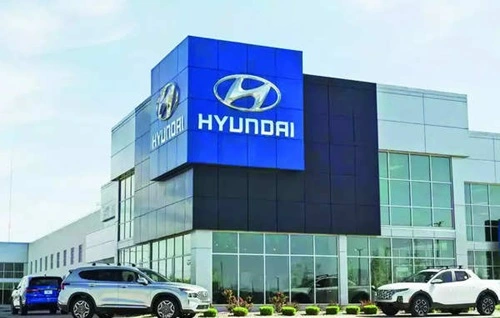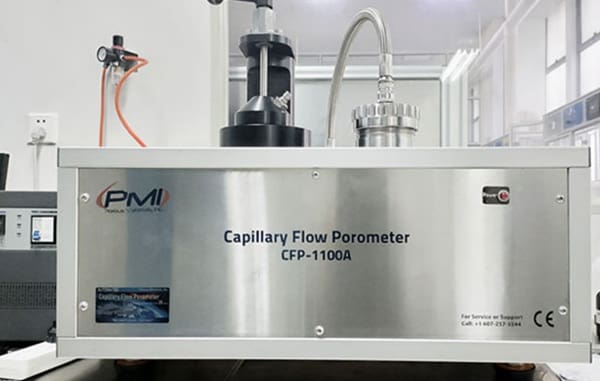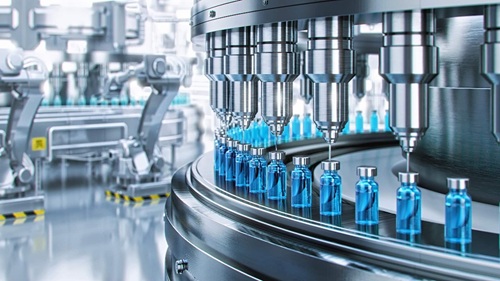Hyundai Motor Company, headquartered in South Korea, has grown into one of the world’s largest automotive manufacturers, with a significant presence in over 190 countries. Established in 1967, Hyundai has built a strong reputation for producing reliable, high-quality vehicles across various segments, including sedans, SUVs, and electric vehicles. In India, Hyundai ranks as the second-largest car manufacturer, trailing only Maruti Suzuki, and has gained popularity for models like the Hyundai Creta, Venue, and i20. However, with the global automotive industry rapidly evolving, Hyundai faces both opportunities and challenges. This SWOT (Strengths, Weaknesses, Opportunities, Threats) analysis examines Hyundai’s current position and future outlook.

Strengths
1. Strong Brand Equity and Global Market Presence:
Hyundai has established itself as a trusted and recognized brand worldwide. Known for its commitment to quality, affordability, and innovation, Hyundai has a loyal customer base across markets in Asia, Europe, North America, and Latin America. Its brand equity is particularly strong in emerging markets like India, where Hyundai is the second-largest carmaker. This global presence gives Hyundai a competitive advantage and enables it to navigate economic cycles in different regions.
2. Diverse Product Portfolio and Focus on SUVs:
Hyundai’s product portfolio spans various segments, including sedans, hatchbacks, SUVs, and electric vehicles. This diversity allows Hyundai to appeal to a broad customer base, from entry-level buyers to those seeking luxury and performance. Hyundai’s focus on the SUV segment with models like the Creta, Tucson, and Venue has helped it capture market demand in India and globally, where SUVs are increasingly popular.
3. Commitment to Innovation and R&D:
Hyundai has consistently invested in research and development, enabling it to stay competitive and meet changing consumer preferences. The company has been a pioneer in electric vehicle (EV) technology, with models like the Hyundai Kona Electric and Ioniq EV. Hyundai’s focus on innovation extends to hydrogen fuel cell technology, exemplified by its Nexo model, which positions it as a forward-thinking automotive company exploring sustainable energy sources.
4. Strong Manufacturing and Supply Chain Capabilities:
Hyundai’s vertically integrated supply chain and manufacturing capabilities provide it with a strong production foundation. The company operates numerous production plants globally, including a major facility in Chennai, India, which serves as an export hub for several regions. Hyundai’s in-house manufacturing capabilities allow it to maintain quality control, manage production costs, and ensure a consistent supply of vehicles to meet demand.
Weaknesses
1. Limited Luxury Brand Presence:
While Hyundai has successfully penetrated the mass and premium mass segments, it has limited presence in the luxury vehicle market compared to competitors like Toyota (Lexus) and Honda (Acura). Although Hyundai launched Genesis as a luxury brand, it has not achieved significant global recognition, especially in regions like India where luxury brands are increasingly in demand. This limited luxury presence restricts Hyundai’s ability to capture high-margin segments in markets where luxury cars are becoming popular.
2. Perception as a Budget Brand:
Despite improvements in quality and design, Hyundai still faces the perception of being a budget or entry-level brand in certain markets. While this perception has helped Hyundai gain customers in cost-sensitive segments, it also restricts its appeal among affluent buyers who may prefer brands with a premium image. Hyundai has made efforts to reposition itself as a higher-end brand with models like the Sonata and Genesis, but overcoming this perception remains a challenge.
3. Heavy Dependence on the Asian Market:
A significant portion of Hyundai’s revenue comes from Asian markets, including South Korea, China, and India. This heavy reliance on Asia exposes Hyundai to risks related to regional economic slowdowns, currency fluctuations, and regulatory changes. For example, Hyundai’s growth in China has slowed due to intense competition from both global and local players. Diversifying revenue sources by strengthening its presence in North America and Europe could mitigate this dependency.
4. High Production and Operational Costs:
Hyundai’s extensive manufacturing infrastructure and focus on vertical integration come with high fixed and operational costs. Rising labor costs, particularly in South Korea, can impact profitability, and any disruptions in production due to strikes or supply chain issues could impact Hyundai’s ability to meet demand. Balancing quality with cost management is essential for Hyundai to maintain competitive pricing without compromising profitability.
Opportunities
1. Expansion in Electric Vehicles and Hydrogen Technology:
The global shift toward electric vehicles presents a significant growth opportunity for Hyundai. The company’s EV models, such as the Kona Electric and Ioniq, have been well-received, and Hyundai is expanding its EV lineup under the Ioniq sub-brand. Additionally, Hyundai is one of the few automotive companies investing heavily in hydrogen fuel cell technology, with the Nexo hydrogen-powered SUV. As governments worldwide promote cleaner mobility, Hyundai’s investment in EV and hydrogen technology positions it well to capture the growing demand for sustainable vehicles.
2. Growth in India’s Automotive Market:
India’s automotive market is projected to grow rapidly, driven by rising disposable incomes, urbanization, and government incentives for clean mobility. As the second-largest car manufacturer in India, Hyundai is well-positioned to capitalize on this growth. With popular models like the Creta, Venue, and i20, Hyundai has a strong foothold in India’s SUV and compact car segments. Expanding its EV offerings and launching affordable models tailored for India’s cost-conscious consumers could further strengthen Hyundai’s market share.
3. Increasing Demand for Connected and Autonomous Vehicles:
Consumers are increasingly interested in connected vehicles with advanced infotainment systems, smartphone integration, and autonomous driving features. Hyundai has made strides in connected vehicle technology, with offerings like BlueLink, which provides a range of connectivity features such as remote control and safety alerts. By expanding its connected car technology and investing in autonomous driving, Hyundai can appeal to tech-savvy consumers and capture demand in the fast-growing smart vehicle segment.
4. Strategic Partnerships and Collaborations:
Collaborating with technology companies and other automotive manufacturers can help Hyundai accelerate its innovation efforts. For example, Hyundai’s partnerships with companies like Aptiv to develop autonomous vehicle technology and Rimac for high-performance EVs position it at the forefront of innovation. Such partnerships enable Hyundai to leverage external expertise, reduce R&D costs, and expedite the launch of advanced technologies in its vehicles.
Threats
1. Intense Competition from Global and Local Players:
The automotive industry is highly competitive, with global players like Toyota, Volkswagen, and Honda, as well as local brands in each region, vying for market share. In India, Hyundai faces stiff competition from Maruti Suzuki, Tata Motors, and Mahindra & Mahindra. Additionally, new entrants such as Tesla and established brands expanding their EV portfolios increase competition, particularly in the electric vehicle segment. This competition requires Hyundai to continuously innovate and maintain competitive pricing.
2. Regulatory Challenges and Environmental Norms:
Automakers face increasingly stringent environmental regulations regarding emissions, fuel efficiency, and safety standards. In markets like Europe and China, where emissions standards are particularly strict, Hyundai must invest in cleaner technologies to remain compliant. Compliance with evolving regulations often requires additional investments, which can impact profitability. Additionally, any non-compliance can lead to fines and affect Hyundai’s reputation.
3. Supply Chain Disruptions and Rising Raw Material Costs:
The automotive industry’s reliance on a global supply chain exposes it to disruptions in raw material supply, semiconductor shortages, and shipping delays, as seen during the COVID-19 pandemic. Hyundai’s production could be impacted by any disruptions in its supply chain, affecting its ability to meet demand. Rising raw material costs, particularly for metals used in electric vehicle batteries, also pose a threat to Hyundai’s margins.
4. Economic Uncertainty and Currency Fluctuations:
Economic slowdowns or recessions in key markets can impact consumer purchasing power and reduce demand for new vehicles. Currency fluctuations also pose a risk, particularly for a company with a global presence like Hyundai. Depreciation of currencies in markets where Hyundai operates can lead to higher costs or reduced profitability, impacting overall financial performance.
Future Outlook
Hyundai Motor Company’s future outlook is optimistic, driven by opportunities in electric vehicles, connected technologies, and growth in emerging markets like India. The company’s commitment to sustainability and innovation, as seen in its EV and hydrogen fuel cell models, positions it well to capture demand in the rapidly evolving automotive industry. Hyundai’s Ioniq sub-brand and continued investment in hydrogen technology align with global shifts toward cleaner energy, setting the stage for growth in EV and alternative fuel segments.
In India, where Hyundai has established itself as the second-largest car manufacturer, the company is well-positioned to capitalize on rising demand for affordable and efficient vehicles. Expanding its product lineup, including introducing more EV models tailored to India’s price-sensitive market, will help Hyundai deepen its market penetration. Strategic investments in rural and semi-urban areas, coupled with financing options, can also enable Hyundai to capture untapped demand in smaller cities and towns.
Hyundai’s focus on connected car technology and autonomous driving aligns with growing consumer interest in smart mobility solutions. Enhancing its BlueLink technology and developing autonomous driving features can help Hyundai attract tech-savvy customers, particularly in urban centers. Strategic partnerships with technology firms and automotive innovators will be crucial to accelerating Hyundai’s advancement in these areas.
However, Hyundai must address certain challenges to sustain growth. Expanding its luxury brand Genesis in key markets and countering the perception of being a budget brand can help Hyundai capture high-margin segments and appeal to affluent consumers. Additionally, managing production costs, improving supply chain resilience, and complying with regulatory standards are essential to maintaining profitability.
In conclusion, Hyundai’s strengths in brand equity, product diversity, and commitment to innovation position it as a leading player in the global automotive industry. By leveraging growth opportunities in electric and autonomous vehicles, expanding in emerging markets, and focusing on connected technologies, Hyundai can strengthen its market position and adapt to evolving consumer preferences. With a strategic focus on sustainability, digital transformation, and customer-centric solutions, Hyundai Motor Company is well-prepared to navigate the challenges and capture growth in the automotive landscape.

